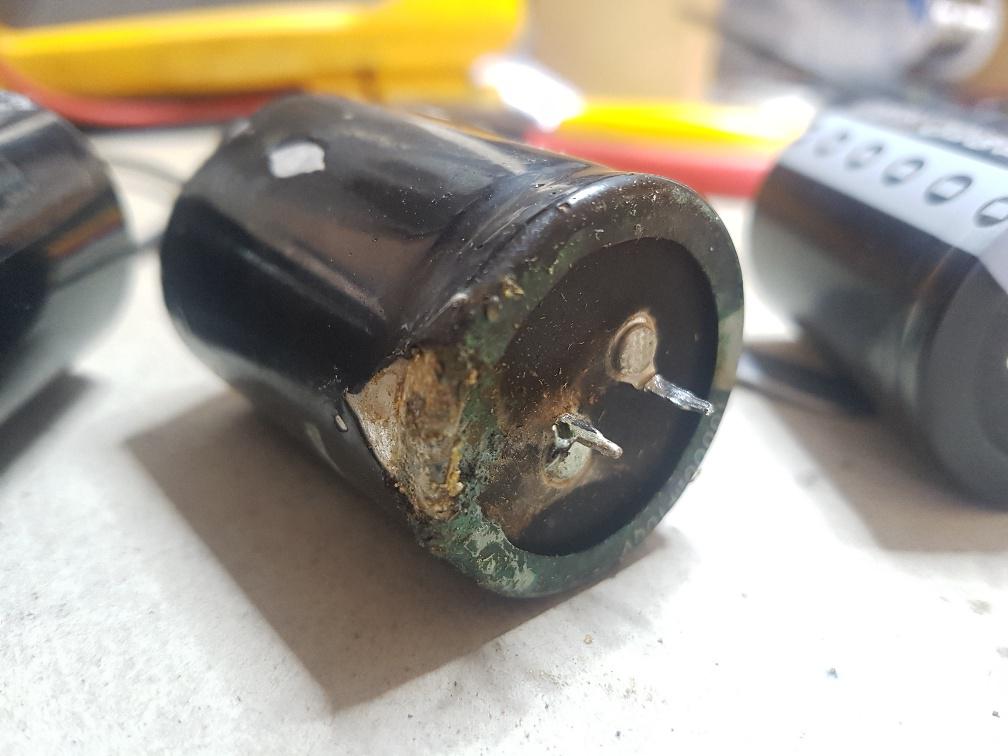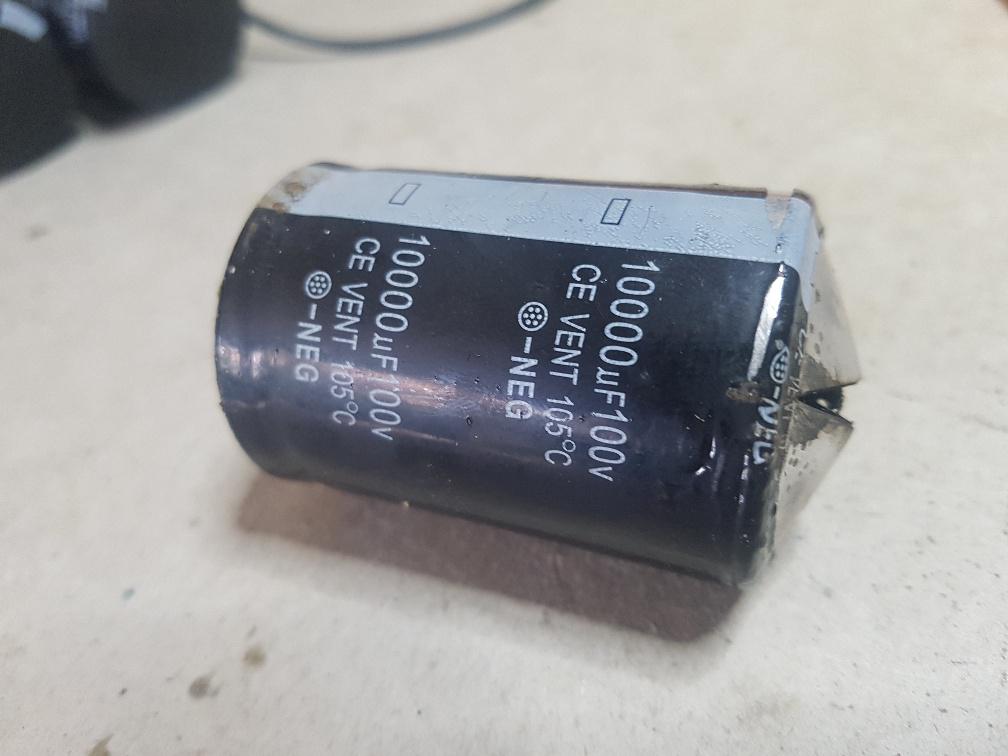
|

|
Forum Index : Electronics : Cheap Capacitors can be costly in time
| Author | Message | ||||
| poida Guru Joined: 02/02/2017 Location: AustraliaPosts: 1418 |
So far I have used these 100V 10,000uF caps in my inverter builds. Why not use one for the DC-DC converter/power supply? Input DC peak volts from the bridge rectifier is 95V. No problems. Right? So I built the power supply and it works fine, with short circuit protection, current limit, etc. It charged the bike battery fine at 54V and 7 Amps. Once the battery was charged I left it to finish off. Later I discovered a blank LCD screen.. not good. The cap had found it too hard to live with 95V and the current ripple from both the bridge rec. and the 20kHz PWM switching. It looked like this after it spooged all it's guts over everything inside the enclosure. And that crap is very corrosive too.   So a cheap cap can cause a lot of extra work rebuilding your device. And potentially damage a $600 ebike battery as an afterthought. The aliexpress sourced cap had zero specifications so we just use them and see if they are OK. For sure, when used is bulk DC supply caps in inverters, and used in large numbers they are fine. (so far..) I noticed the cap got warm but not hot when the supply was running. Clearly it was not happy with the ripple current. 6 months ago I blew one of these caps from simple overvolting, I recall it was only 110V I think. Today I rebuilt the power supply using one of these , a Nichicon 4700uF 100V cap costing $12 AUD. The aliexpress cap costs $4 US After a few hours at 150W to 200W output, the cap remains at room temperature. Nichicon give specs on max. ripple current. the 4,700uf 100V cap has it at 5.2 Amps. Ok, how do you measure this? Or do you calculate it? I put a current sensor between the cap terminal and +ve supply and had a look on the DSO. The current increases each 1/2 wave of the mains supply, with peaks of about 3 Amps. The current decreases due to PWM switching, at 20kHz with peaks of about 2-3 Amps So there are two current signals on top of each other. The total swing from low to high is only about 3 Amps since the PWM current pulses follow the mains 1/2 wave up and down. Anyway, it appears it will not blow up so I think it worth the $$ to get caps that have specifications. It will save you many hours of work and worry. I want to ask here how to size caps for these sort of jobs. I don't like calculating ripple, I prefer to measure it. How to measure it. RMS current is best? The specs may not use RMS current.. wronger than a phone book full of wrong phone numbers |
||||
| phil99 Guru Joined: 11/02/2018 Location: AustraliaPosts: 2135 |
I think they do mean RMS as I(rms) squared R(esr) loss is the main source of heat. Putting large plastic dielectric caps in // with electros can shunt some of the H.F. ripple, reducing the heating. |
||||
| poida Guru Joined: 02/02/2017 Location: AustraliaPosts: 1418 |
How to size the plastic caps? Need to look at impedance at the PWM freq and higher harmonics and choose correct uF? wronger than a phone book full of wrong phone numbers |
||||
| Haxby Guru Joined: 07/07/2008 Location: AustraliaPosts: 423 |
I was surprised a while ago reading a nichicon data sheet where it gave the mean time before failure as 1000 hours. Obviously that was at its max temperature and max current ripple, and probably max voltage too. But wow, only 1000 hours. So I can see that it's easy to design obsolescence into a product just by skimping out on the capacitors. And the push for cheaper and smaller products basically forces designers into a corner. Build it big and beefy I say. And don't use no-name brand caps. It's hard enough keeping the smoke in as it is. |
||||
| wiseguy Guru Joined: 21/06/2018 Location: AustraliaPosts: 1156 |
The flip side to that is how I designed some rail power supply products. Synchronous rectification full bridge switching, the lowest Nichicon ESR caps I could find and the whole supply de-rated considerably, no fans or heatsinks required. The Railways loved them and after 10+ years, no failures and that is where I shot myself in the foot, the bloody things never stop working, to allow for repeat sales - it was a great technical achievement but an ongoing product resale disaster. Luckily the rail sales did command a reasonable sell price initially but from a technical standpoint it is hard to see the invisible goal posts and know just how hard to kick. The big factor to avoid premature failure I found was temperature - keep the capacitor temperature as low as possible (within reason) and that includes trying to keep the ripple current below ~75% of their rated ripple to avoid/minimise internal temperature rise, both helped to achieve very good longevity. Capacitor failure is usually the most likely component to fail leading to premature death in HF power switching circuits. Lastly stick with brand names such as Nichicon, United Chemicon & EPCOS & avoid Aliexpress type suppliers for power components, it is worth the few extra dollars to deal with reputable suppliers such as Digikey, Mouser, RS or Element14. If at first you dont succeed, I suggest you avoid sky diving.... Cheers Mike |
||||